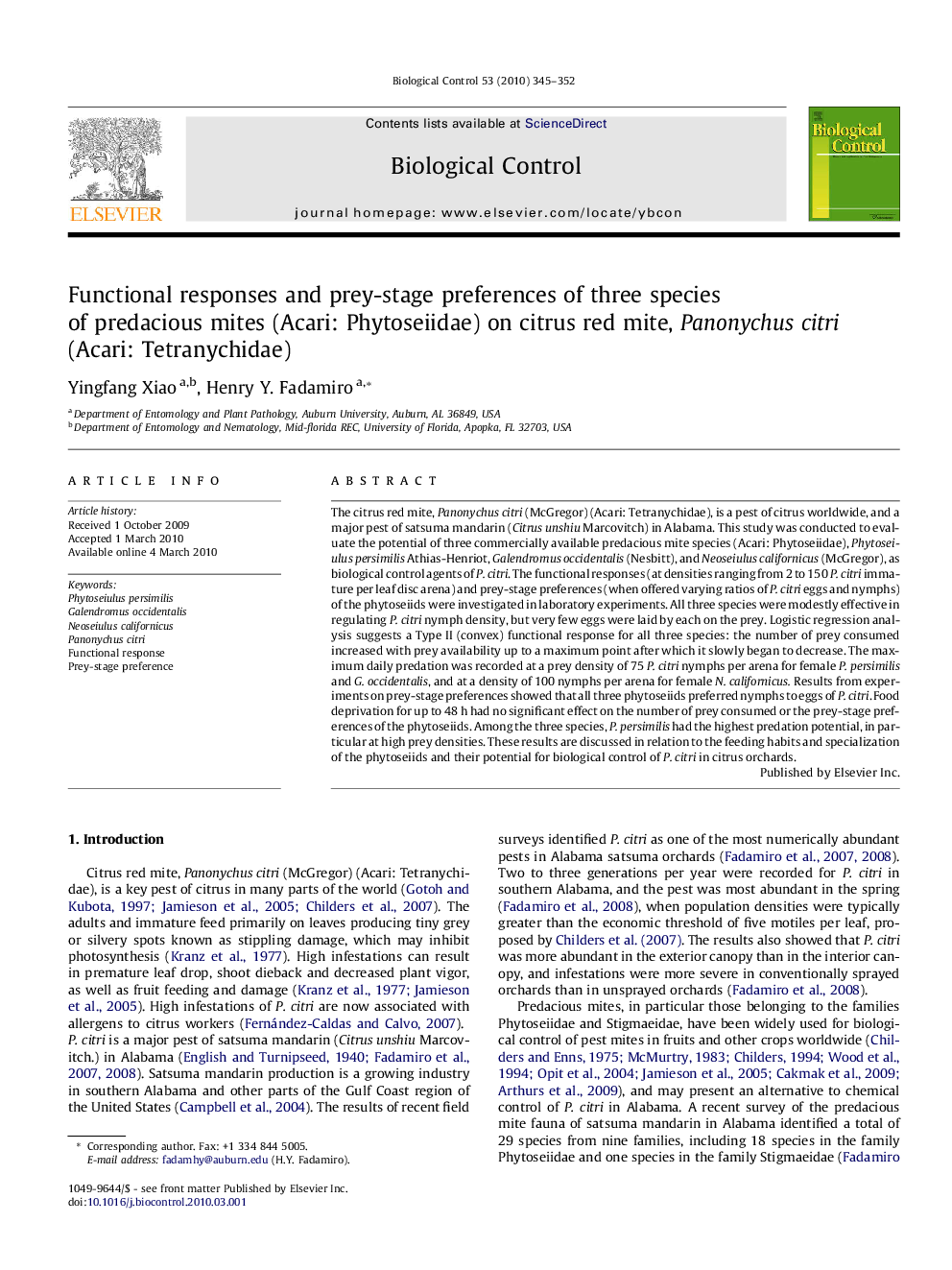| کد مقاله | کد نشریه | سال انتشار | مقاله انگلیسی | نسخه تمام متن |
|---|---|---|---|---|
| 4504392 | 1321089 | 2010 | 8 صفحه PDF | دانلود رایگان |

The citrus red mite, Panonychus citri (McGregor) (Acari: Tetranychidae), is a pest of citrus worldwide, and a major pest of satsuma mandarin (Citrus unshiu Marcovitch) in Alabama. This study was conducted to evaluate the potential of three commercially available predacious mite species (Acari: Phytoseiidae), Phytoseiulus persimilis Athias-Henriot, Galendromus occidentalis (Nesbitt), and Neoseiulus californicus (McGregor), as biological control agents of P. citri. The functional responses (at densities ranging from 2 to 150 P. citri immature per leaf disc arena) and prey-stage preferences (when offered varying ratios of P. citri eggs and nymphs) of the phytoseiids were investigated in laboratory experiments. All three species were modestly effective in regulating P. citri nymph density, but very few eggs were laid by each on the prey. Logistic regression analysis suggests a Type II (convex) functional response for all three species: the number of prey consumed increased with prey availability up to a maximum point after which it slowly began to decrease. The maximum daily predation was recorded at a prey density of 75 P. citri nymphs per arena for female P. persimilis and G. occidentalis, and at a density of 100 nymphs per arena for female N. californicus. Results from experiments on prey-stage preferences showed that all three phytoseiids preferred nymphs to eggs of P. citri. Food deprivation for up to 48 h had no significant effect on the number of prey consumed or the prey-stage preferences of the phytoseiids. Among the three species, P. persimilis had the highest predation potential, in particular at high prey densities. These results are discussed in relation to the feeding habits and specialization of the phytoseiids and their potential for biological control of P. citri in citrus orchards.
Journal: Biological Control - Volume 53, Issue 3, June 2010, Pages 345–352